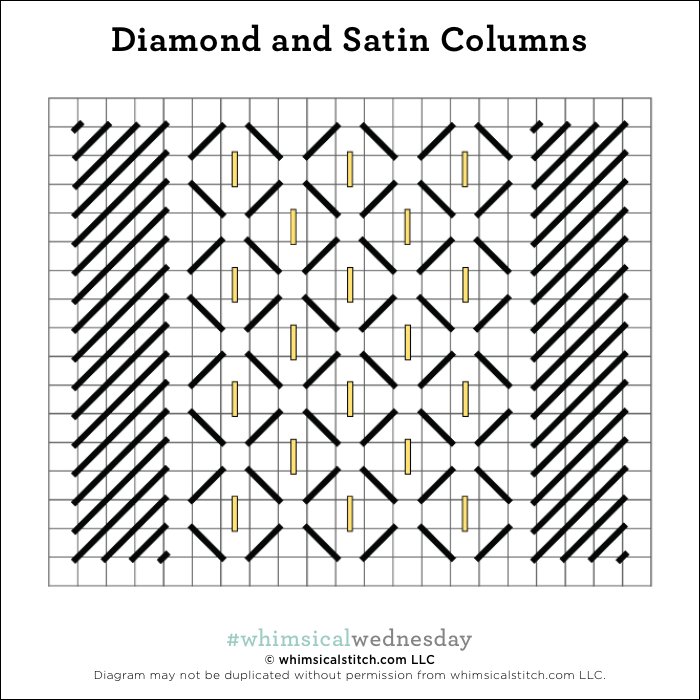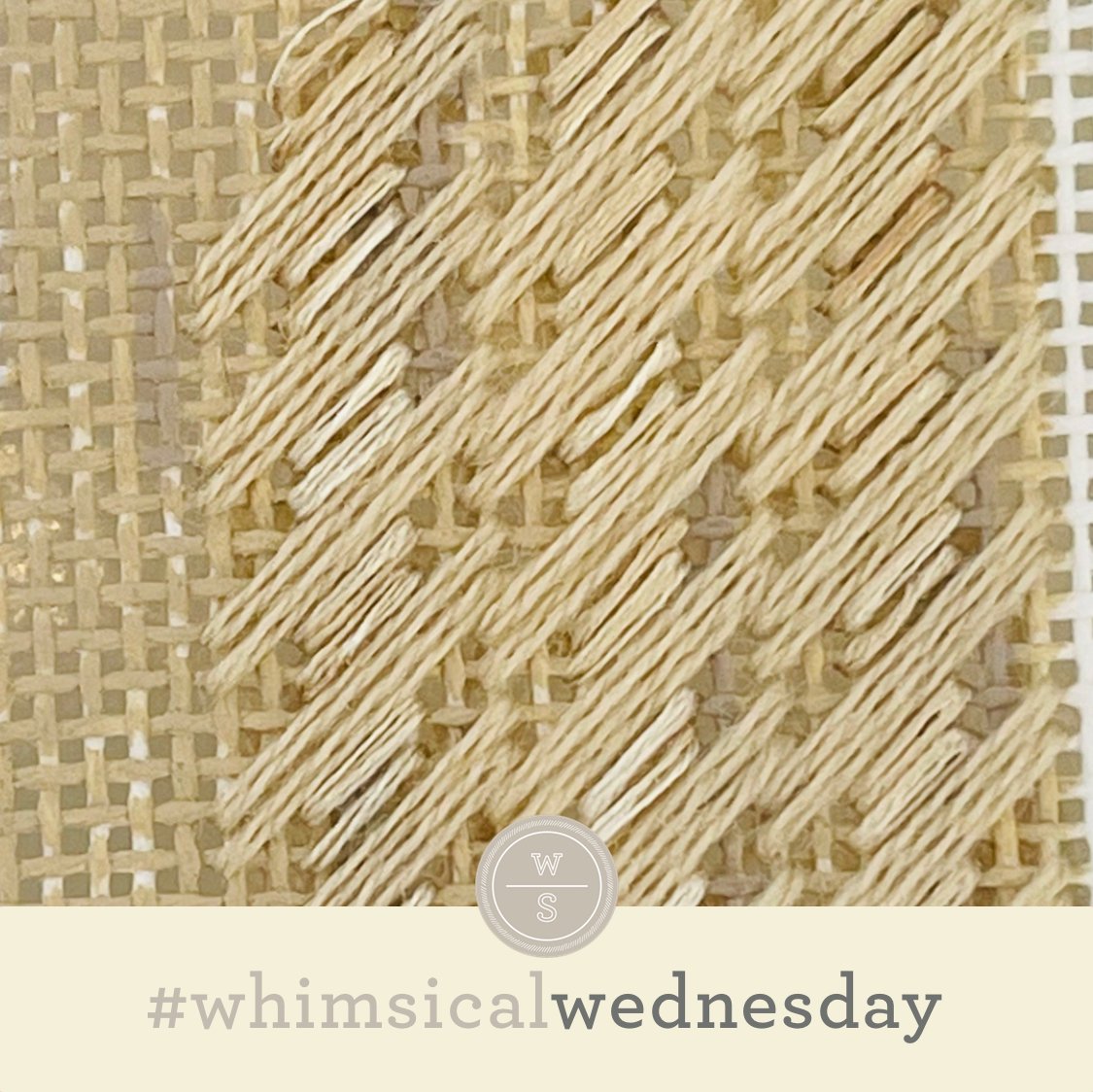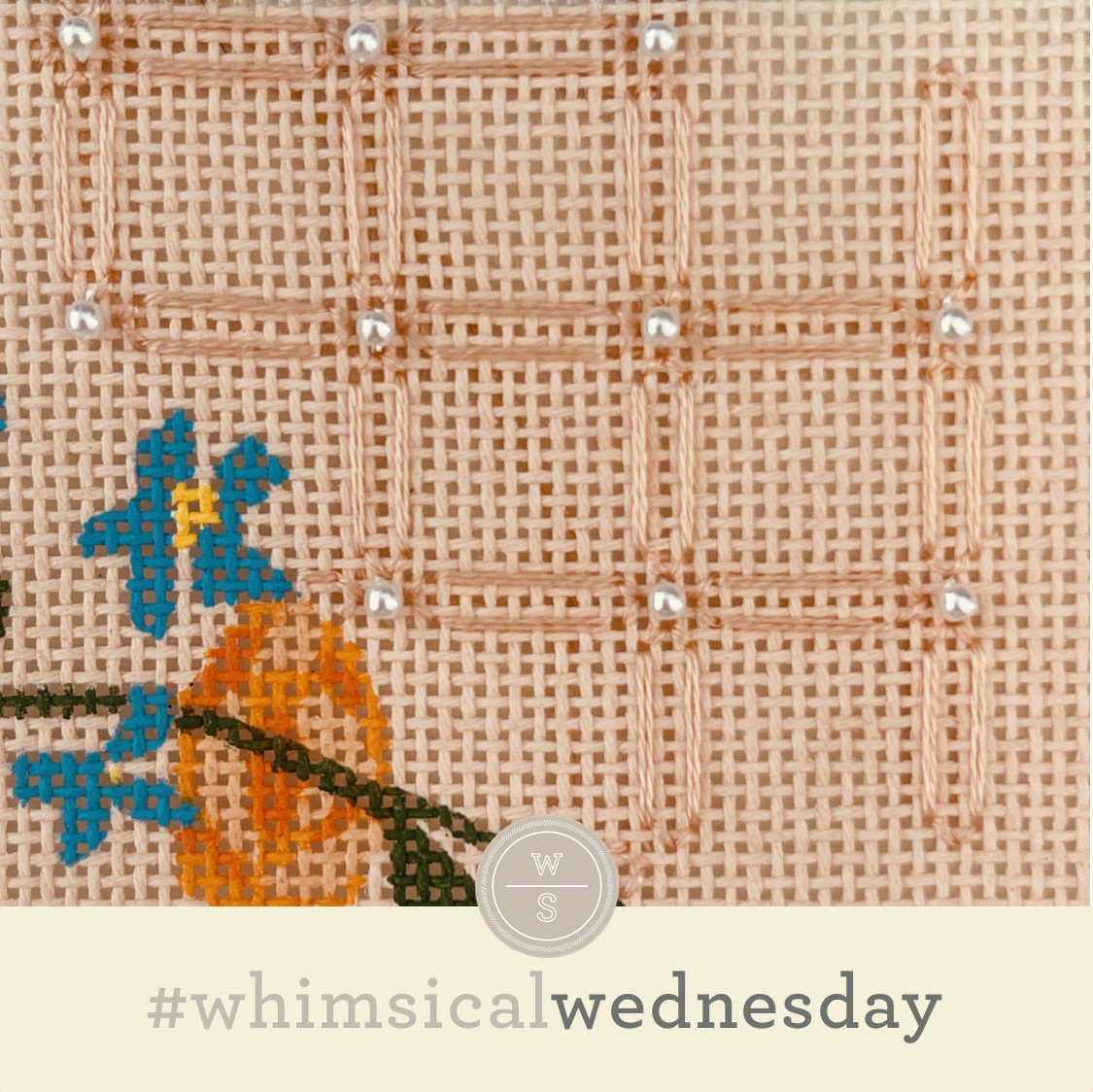I am often asked how I come up with my stitches. I travel down a few different paths in search of a stitch. For example, my camera roll has more than its fair share of rugs, fabric patterns (from chairs, naturally), and leaded windows from…wait for it…TV shows. (And, yes, I frequently receive an eye roll when I pause an episode for a photo). I, too, am inspired by all of the stitches we see in our internet travels and today’s stitch is a good example.
Today’s stitch is a hybrid of a cute background from a Zecca piece from @themarquissisters (scroll until you see the diamonds on the yellow background) and a stitch I saw for the briefest moment on my pinterest.com feed.
The stitched sample is me playing with two plies of Soie d’Alger (black lines) and Treasure Braid (yellow lines). These diamond groups are a little large, so I added some extra space between the groups to let each group shine. To minimize bringing threads up from under pre-existing threads, I added the split stitches in the center of each diamond first. I parked the Soie to the side, added the Treasure Braid for the yellow lines, and resumed the stitches on both sides of the split stitches to complete a single diamond. When I was done with all four diamonds of a group, I buried both threads behind the group of diamonds and moved on to the next diamond.
This stitch will make a fantastic background or wall covering. To take that one step further, and if you are a fan of more open spaces, consider adding the groups of (four) diamonds in a random pattern. They are large enough to stand alone and the randomness will add lightness to the background or wall, redirecting the eye to the main subject on the canvas. I am also already planning on using this stitch, as diagrammed, on clothing for a rather large Halloween personality. My current thoughts are to use a Petite Very Velvet for the black lines and Fyre Werks or a Kreinik ribbon for the yellow lines.
Just a reminder about how to evaluate stitches for size on your project.
As you are auditioning stitches (from any stitch source), count the number of canvas threads on the diagram that match your mesh size. And there you have what an inch of the stitch will look like. Evaluate that against the area where you plan to use the stitch and make your final decision. If you start integrating this step into your stitch selection process, you may be surprised at how many stitches you think are large are much smaller than you realize. (Or, in today’s case, the stitch is much larger than it looks.)
By (sometimes) including this step in my own process, I find I am now integrating much longer stitches than I ever thought I would. I used to think a stitch six rows long was super big. I have very much changed my tune, which has helped me expand my creativity, especially for large-space stitches.
Today’s stitch diagram, along with all other #whimsicalwednesday and #smallspacesunday stitch diagrams, can also be found on a Pinterest board here. Be sure to follow whimsicalstitch.com on Facebook, Pinterest, Instagram, and Twitter.
If you like what you see on this blog, there's more. Mary’s Whimsical Stitches is a series of three books offering contemporary how-to collections of more than 250 stitches (in each volume) for all stitchers, regardless of skill level. All books include updated and sequenced diagrams from this blog plus a collection of all-new stitches from private lessons and other class projects. Visit here to find a needlepoint retailer that carries my books.
New to needlepoint or looking for a refresher? Please download a handy how-to guide covering basic needlepoint stitches and stitch compensation techniques along with new top-line information on needlepoint materials and tools, how to handle threads, and other helpful needlepoint resources.
whimsicalstitch.com also sells Stitch Guides and Stitch Concepts for Melissa Shirley Designs, Zecca Designs, Sandra Gilmore, Purple Palm, Maggie, and Penny MacLeod, and many more. Click here to see the newest guides and click here to see the entire collection.
I hope you have the perfect spot for this stitch! Please enjoy! Have a wonderful #whimsicalwednesday!
A Note about Diagrams
I use color in diagrams to make them as clear as possible. The primary function of different colored lines is to illustrate a stitch sequence. For example, the layering of colors demonstrates you add them in that order. They can also provide ideas on integrating additional threads (one line for each color). Or, you can use the same thread for all color lines. That's where I encourage you to use your imagination for the space you are stitching!














